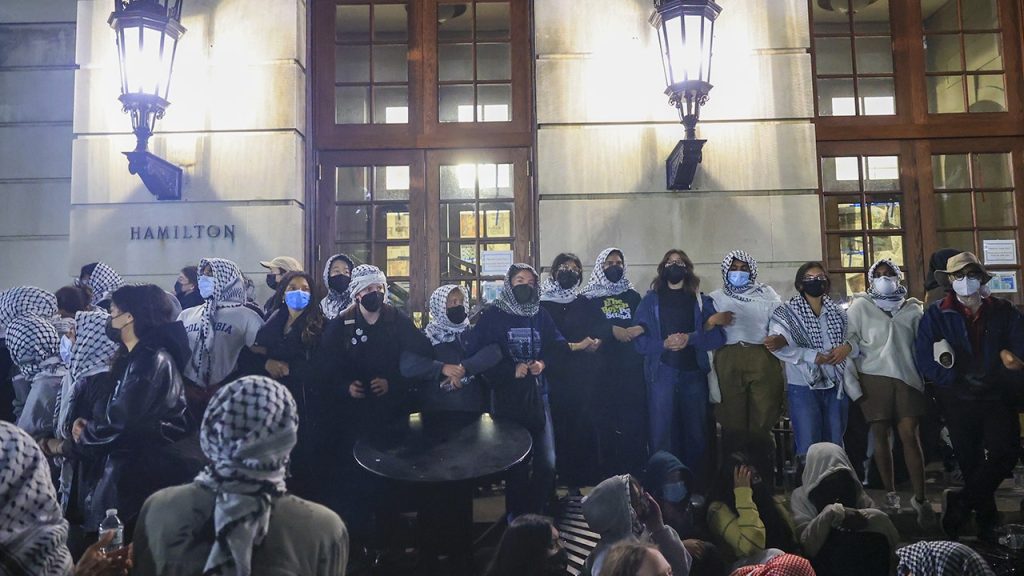Anti-Israel protesters at Columbia University escalated their demonstration by taking over Hamilton Hall, an academic building on the Manhattan campus. They barricaded entrances, smashed windows, unfurled a Palestinian flag, and chanted slogans. The protesters demanded that the university divest from Israel, be more transparent about its investments, and provide amnesty to those participating in the demonstration. The university had previously set a deadline for students to leave their encampment or face suspension, and began handing out suspensions with the help of law enforcement officers on Monday night.
The situation became chaotic as the protesters stormed into Hamilton Hall, with at least three facilities workers reportedly forced to stay inside until around 12:40 a.m. The protesters covered the cameras in the building and renamed it “Hind’s Hall” in memory of a child who died in Gaza during conflict with Hamas. The protest continued for nearly two weeks before escalating on Tuesday morning. University President Minouche Shafik had previously called for the encampment to be disbanded and protesters arrested, but negotiations with the organizers led to allowing the demonstration to continue.
Following failed negotiations on Monday, Shafik authorized officers to begin removing the students from the encampment, leading to the takeover of Hamilton Hall. The New York Police Department remained outside the campus during the unrest, stating they would only enter if they heard reports of injuries. The protesters continued to demand their three main objectives despite the escalating situation. The university faced criticism for allowing the antisemitic group to remain on campus and negotiating with the organizers rather than taking stronger action.
The escalation of the protest at Columbia University comes amid a larger trend of anti-Israel demonstrations on college campuses across the United States. President Trump weighed in on the issue, expressing concern about the protests and arrests happening on campus. The situation at Columbia highlighted the challenges faced by universities in balancing free speech and public safety when dealing with disruptive protests. Students who participated in the demonstration faced suspension and potential legal consequences for their actions.
The protest at Columbia University received attention from national news outlets and raised questions about campus safety and freedom of expression. The university’s response to the demonstration, including negotiations with the protesters and subsequent suspensions, sparked debate within the academic community. The incident at Hamilton Hall demonstrated the complexities of managing protests on college campuses, particularly when they involve controversial political issues and escalate to occupy academic buildings.
As the situation at Columbia University continued to unfold, it prompted discussions about the broader political and social implications of the protest. The demands of the protesters reflected ongoing debates about the Israeli-Palestinian conflict and the role of universities in divesting from certain countries or causes. The demonstration at Columbia underscored the challenges faced by both institutions of higher education and law enforcement in responding to politically charged protests and balancing the rights of students with the need to maintain public order and safety.


